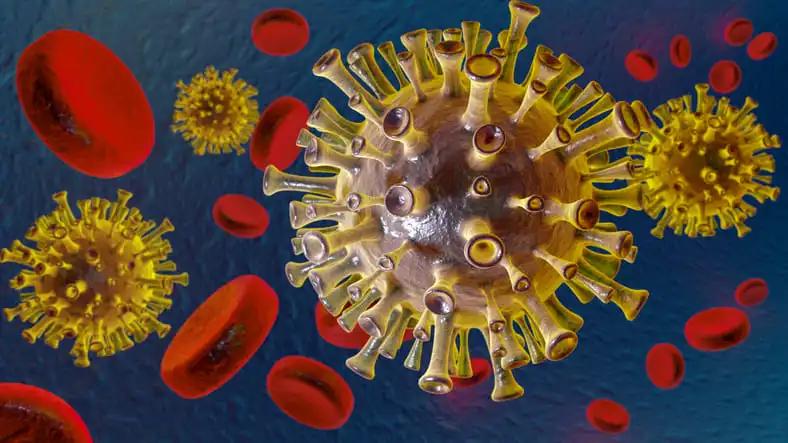KEY TAKEAWAYS
- The Phase 3 DREAMM-3 trial evaluated the antibody-drug conjugate belamaf as monotherapy in adult patients with RRMM at the second relapse (3L+) or later.
- The trial’s primary aim was to compare the tolerability of belamaf versus placebo in RRMM patients.
- Patients were randomly assigned to receive either belamaf or a comparator treatment Pd and completed electronic PRO measurements at baseline.
- The belamaf group showed modest improvements in fatigue scores compared to the baseline.
- While some belamaf-treated patients experienced ocular adverse effects and a slight deterioration in vision-related functioning at a one-time point.
- The DREAMM-3 trial demonstrated that belamaf monotherapy is a well-tolerated treatment option for patients with relapsed and refractory multiple myeloma.
The antibody-drug conjugate belamaf, which targets the B-cell maturation antigen, induces cell death through direct cell killing and immune-mediated mechanisms. The Phase 3, randomized, multicenter, open-label DREAMM-3 trial (NCT04162210) compared belamaf monotherapy versus Pd in adult patients with RRMM at second relapse (3L+) or later.
To reach the tolerability of belamaf versus placebo in DREAMM-3. Patients were randomized (2:1) to receive either belamaf or Pd and conducted electronic patient-reported outcome (PRO) measurements at baseline (BL) and every three weeks during treatment (tx). The EORTC 30-item Core Module (QLQ-C30) assessed critical health domains, such as fatigue, physical function, and global health. Utilizing the disease symptoms domain of the EORTC Multiple Myeloma module (QLQ-MY20), MM-specific pain was evaluated. The Ocular Surface Disease Index (OSDI) was used to assess the impact of prospective ocular symptoms on vision-related functioning (VRF). Overall tolerability and patient-reported adverse events (AEs) were evaluated using the FACT-GP5 and PRO-CTCAE instruments. Using mixed models for repeated measures, the mean change from baseline (BL) was contrasted between treatment groups (grps) over time for EORTC measures. Patients with significant modifications in EORTC and VRF scores (10-point and 12.5-point change, respectively) were also reported by visit.
In 287 pts (belamaf n=192, Pd n=95), compliance with PRO assessments ranged from 75% to 90% across most study visits in both groups. The belamaf group reported modest improvements in fatigue scores relative to BL, with statistically significant improvements close to Pd at Week (W) 13, W19, and W40. Across visits, a more substantial proportion of belamaf grp patients (40–60%) reported relief in fatigue compared to Pd patients (~25–40%). Other EORTC domains did not exhibit statistically significant differences in mean scores between groups. Throughout the study, the global health status and physical functioning mean scores remained stable or improved in both groups, with the Belamaf group demonstrating increasingly more significant improvements than the W37 group. At W4, 29% of patients on belamaf showed meaningful improvement in global health scores, which increased to 53% at later time points. At each visit, 27–58% of belamaf-treated patients demonstrated significant improvement in disease discomfort.
W7 with belamaf observed deterioration in VRF; 67% of patients exhibited 1 meaningful decline compared to 49% on Pd. Although 31% of patients on belamaf reported 1 example of “severe” or “very severe” blurred vision (PRO-CTCAE) compared to 8% of patients on placebo, belamaf was well tolerated overall, with >80% of patients in both groups reporting none, moderate, or infrequent AEs at each visit. The majority of belamaf-treated patients (>70%) reported feeling “not at all” or “slightly” troubled by treatment adverse effects across visits (FACT-GP5). Similar tolerability was noted in the Pd group. Patients receiving belamaf versus placebo demonstrated significant improvement in fatigue, a difficult-to-manage RRMM symptom. Patients in both groups showed modest mean improvements in MM-related pain. Despite ocular adverse effects, the physical functioning and global health status of belamaf-treated patients improved over time. Future work on the RPA will emphasize time-to-event and respondent-based analyses. Overall, DREAMM-3 PRO data indicate that belamaf monotherapy is a well-tolerated treatment option with a positive effect on important health outcomes, particularly fatigue, for patients with 3L+RRMM.
Source: https://library.ehaweb.org/eha/2023/eha2023-congress/386793/vania.hungria.patient.28pt29-reported.outcomes.in.pts.with.relapsed.refractory.html?f=menu%3D16%2Abrowseby%3D8%2Asortby%3D2%2Ace_id%3D2489%2Aot_id%3D27922%2Atrend%3D4016%2Amarker%3D4178
Clinical Trial: https://clinicaltrials.gov/ct2/show/NCT04162210
Vania Hungria, Katja Weisel, Brooke Currie, Sue Perera, Neal Sule, Wei He, Astrid McKeown, Sandhya Sapra, Linda Nelsen, Mary Li, Sophie Barale, Julia Boyle, Kaytlyn McPoyle, Meletios A. Dimopoulos/PATIENT (PT)-REPORTED OUTCOMES IN PTS WITH RELAPSED/REFRACTORY MULTIPLE MYELOMA (RRMM) TREATED WITH BELANTAMAB MAFODOTIN (BELAMAF) VS POMALIDOMIDE/LOW DOSE DEXAMETHASONE (PD) IN THE DREAMM-3 STUDY/Inc, M. G. (n.d.). PATIENT (PT)-REPORTED OUTCOMES IN PTS WITH RELAPSED/REFRACTORY… by Prof. Dr. Vania Hungria. Library.ehaweb.org. Retrieved July 14, 2023, from https://library.ehaweb.org/eha/2023/eha2023-congress/386793/vania.hungria.patient.28pt29-reported.outcomes.in.pts.with.relapsed.refractory.html?f=menu%3D16%2Abrowseby%3D8%2Asortby%3D2%2Ace_id%3D2489%2Aot_id%3D27922%2Atrend%3D4016%2Amarker%3D4178



